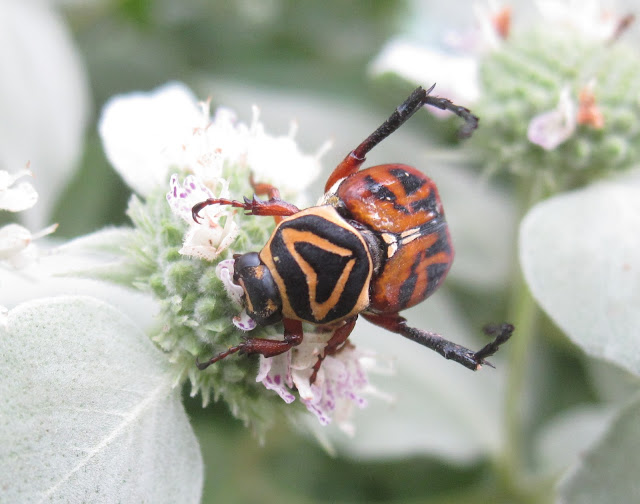So far, the plant seems to attract bees primarily, though occasionally I will see an unusual spider or an assassin beetle hiding among the foliage. Yesterday, I saw what I first thought was a very large mosquito and then thought must be some kind of crane fly.
 |
| may be a crane fly |
Tom then came home and noticed a beautiful little beetle on one of the mountain mint plants, and I began taking photos. One of the most interesting details about this beetle is how it used its two hind legs. Sometimes the beetle would lift them high in the air, and as it plunged its head into a tiny flower, I was reminded of an overly refined lady lifting her pinkie as she takes a sip of tea from a china tea cup. Those hind legs also helped steady it as it moved from flower to flower.
Here are a series of photos in which I tried to capture the beautiful coloration of the beetle. To get an idea of the size of the beetle, the entire flower head of the mountain mint, with all its tiny inflorescences, is only about 1/2-inch across. Notice, also, the heart-shaped design on its pronotum. The beetle, I discovered, is a Delta Flower Scarab. It gets its name from that delta-shaped design on its pronotum, a design which on this beetle is more heart-shaped.
- North American Beetles at www.insectidentification.org
- "Insects: Introduction to Beetle", at Animal Planet.








No comments:
Post a Comment